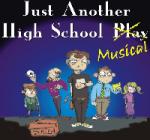There are a lot of surprises for aspiring voice talents who cross my path either as a student via Edge Studio, or just at, say, a party. You know, the ones with “such a nice voice” who need to read Dave Courvoisier’s book ( or any of the other amazing resources I blogged about a few months ago).
The first reality check is, of course, the need to treat this like the business it is. There has been a lot written about that, so again I refer you to those who have busted this myth in their amazing blogs and books. (Derek Chappell, our blog curator, and John Florian, Voiceover Xtra guru, are more great places to start).
The second big myth to bust – and equally as important to know – is that this not a business of “reading in a pretty voice.” This is a business of communication - and, often (or always), a business of acting. Maybe there is really no difference – but, whatever you call it, you’ve got to know the story you are telling!
Remember that high school play you were in? Or summer camp? College? Community or Professional Theatre?

The Theatre Process, and Voiceovers
1 – Casting. yeah, that.
2 – The cast assembled to do a full read-through of the script. This way, everyone knew the whole story, where it was going, what the overall gestalt and tone of the story was. (Voiceover equivalent: Read through the script – or at least skim the longer ones – before you press record. See what it’s about, where it’s going)

Rehearsal Process, production of Chicago, 2014
3 – Then, you picked it apart. People separated to learn their piece of the story – scenes, motivations, character development. You had to look at each scene you were in, decide what happened before the scene began and what you wanted from the other characters. Where the conflicts were. Stuff like that. “What’s my motivation?” “Who is my character?” (Voiceover equivalent: copy analysis/breakdown, seeing the parts of the whole and how the “reason for talking” keeps changing. Only thing is, unless this is a dialog script, your “scene partners” are invisible, tho must remain in your imagination)
4 – Rehearsal, and Put the pieces back to together. You memorized the words and blocking in the play (we can skip this part in VO. Yay!…though, familiarity does help)
5 – Performance. Which means, you now go back to the start and pretend you don’t know the story…each and every time you deliver it. Now you are telling it to your audience – the other character in the “room.”

Performance!

Performance! Yeah, I was Mama Morton.I do not wear these clothes while doing voiceovers. :)
The Voiceover Difference: Speed
(No, not the drug. Get your mind out of the obvious joke.) I can hear the question now. In fact, I do, all the time, from beginning VO students: “You mean I really have to do all that?”
Yep. ‘Fraid so. You just have to do it all in about 30 seconds. That’s where it differs from that production of Our Town. Or Chicago. (how I spent my summer vacation – and loved it!)
It all has to happen FAST.
- See/know the story,
- Pick apart the story,
- Forget the story,
- Communicate the story – keeping all the other characters, desires, motivations, etc. in mind.
The good news is: the more you do it, the easier it becomes – and faster. Like all learning. But if you don’t put the time in at first – you won’t build the skills. And we voice talents need those skills. It’s what sets us apart…and keeps us working
Enjoy learning and telling that story! And thank your high school drama teacher sometime if it all comes back to you.

